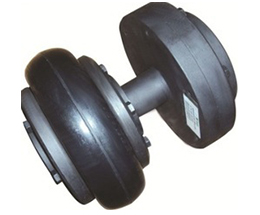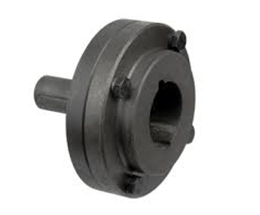Product Description
Gear coupling flexible Fluid Flange HRC Spacer PIN MH Rigid NM Jaw Steel chain brake standard drum wheel rolling shaft steel transmission parts
Ever-Power industry is 1 of the biggest couplings manufacturer in China, have already exported lots of gear couplings, Jaw couplings, chain couplings etc.. to Japan, Korea, Italy , USA …..
/* March 10, 2571 17:59:20 */!function(){function s(e,r){var a,o={};try{e&&e.split(“,”).forEach(function(e,t){e&&(a=e.match(/(.*?):(.*)$/))&&1
| Standard Or Nonstandard: | Standard |
|---|---|
| Shaft Hole: | 8-24 |
| Torque: | >80N.M |
| Bore Diameter: | 19mm |
| Speed: | 4000r/M |
| Structure: | Flexible |
| Samples: |
US$ 9999/Piece
1 Piece(Min.Order) | |
|---|



How Do Spacer Couplings Compare to Other Types of Couplings in Terms of Performance?
Spacer couplings offer distinct advantages and disadvantages compared to other types of couplings, making them suitable for specific applications:
1. Misalignment Tolerance: Spacer couplings have limited flexibility and can handle only minor misalignment between shafts. In contrast, flexible couplings like elastomeric and gear couplings can accommodate higher levels of misalignment due to their elastic properties.
2. Torque Transmission: Spacer couplings provide excellent torque transmission capabilities, making them suitable for heavy-duty applications. They can efficiently transfer torque between shafts without backlash.
3. Maintenance Requirements: Spacer couplings are relatively simple in design and do not require frequent maintenance. They do not have moving parts or wearing elements, reducing the need for regular inspection and replacement.
4. Torsional Stiffness: Spacer couplings offer high torsional stiffness, ensuring precise and reliable torque transmission between the connected equipment.
5. Installation and Alignment: Installing a spacer coupling requires careful alignment between shafts. While it may be more involved compared to some flexible couplings, proper alignment is essential for optimal performance.
6. Cost: Spacer couplings are generally more cost-effective than some high-performance flexible couplings, making them an attractive choice for various industrial applications.
7. Application Suitability: Spacer couplings are commonly used in applications where rigid and reliable torque transmission is required, such as pumps, compressors, and other heavy machinery.
8. Operating Conditions: Spacer couplings can handle high temperatures, making them suitable for applications in challenging environments.
When selecting a coupling for a specific application, it is essential to consider the specific needs of the system, including the required misalignment compensation, torque transmission capacity, maintenance requirements, and operating conditions. Each coupling type has its strengths and limitations, and the choice will depend on the unique demands of the application.

Can Spacer Couplings be Used in Applications with Varying Operating Temperatures?
Yes, spacer couplings can be used in applications with varying operating temperatures. The suitability of a spacer coupling for a specific temperature range depends on the materials used in its construction.
Many spacer couplings are designed to withstand a wide range of temperatures, making them versatile for use in diverse industrial environments. Some key considerations regarding temperature and spacer couplings include:
1. Material Selection: The choice of materials plays a crucial role in determining the temperature range that a spacer coupling can handle. Common materials used for spacer couplings include steel, stainless steel, aluminum, and various alloys. Each material has its own temperature limits, and it is essential to select a coupling made from materials that can withstand the anticipated temperature conditions in the application.
2. High-Temperature Applications: For high-temperature applications, spacer couplings made from materials with excellent heat resistance are suitable. Stainless steel and high-temperature alloys are often used in such cases. These materials can withstand elevated temperatures without losing their mechanical properties, ensuring reliable performance under extreme conditions.
3. Low-Temperature Applications: In low-temperature environments, certain materials may become brittle and lose their toughness. Spacer couplings intended for use in cold environments should be made from materials that remain ductile and reliable at low temperatures. Special low-temperature steels or alloys are commonly used for these applications.
4. Thermal Expansion: Spacer couplings should also account for the thermal expansion that occurs in machinery as it operates at varying temperatures. Different materials have different coefficients of thermal expansion, and the design of the coupling must consider these factors to prevent issues related to differential thermal expansion between connected components.
5. Insulation: In some applications, particularly in industries where electrical insulation is critical, spacer couplings with insulating properties may be necessary to prevent electrical conduction between connected shafts. Insulating spacer couplings are commonly used in electric motor drives and other electrical systems to enhance safety and prevent electrical interference.
When selecting a spacer coupling for an application with varying operating temperatures, it is essential to consider the specific temperature requirements of the system, the materials used in the coupling’s construction, and any additional factors related to thermal expansion and insulation. Consulting with coupling manufacturers or experts can help ensure the correct coupling is chosen for the specific temperature conditions in which it will operate.


editor by CX 2024-01-16